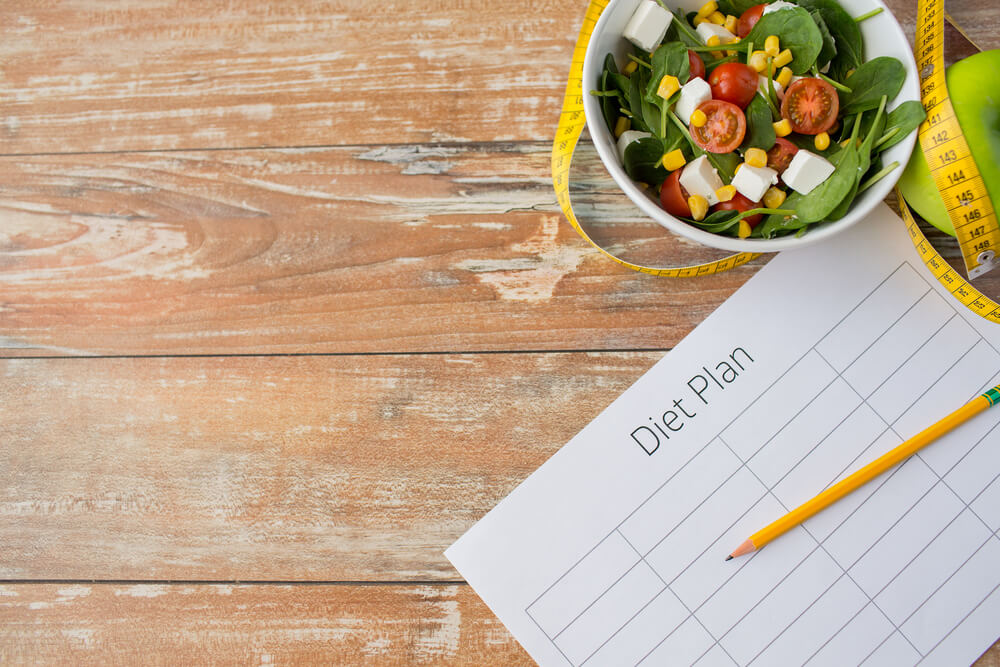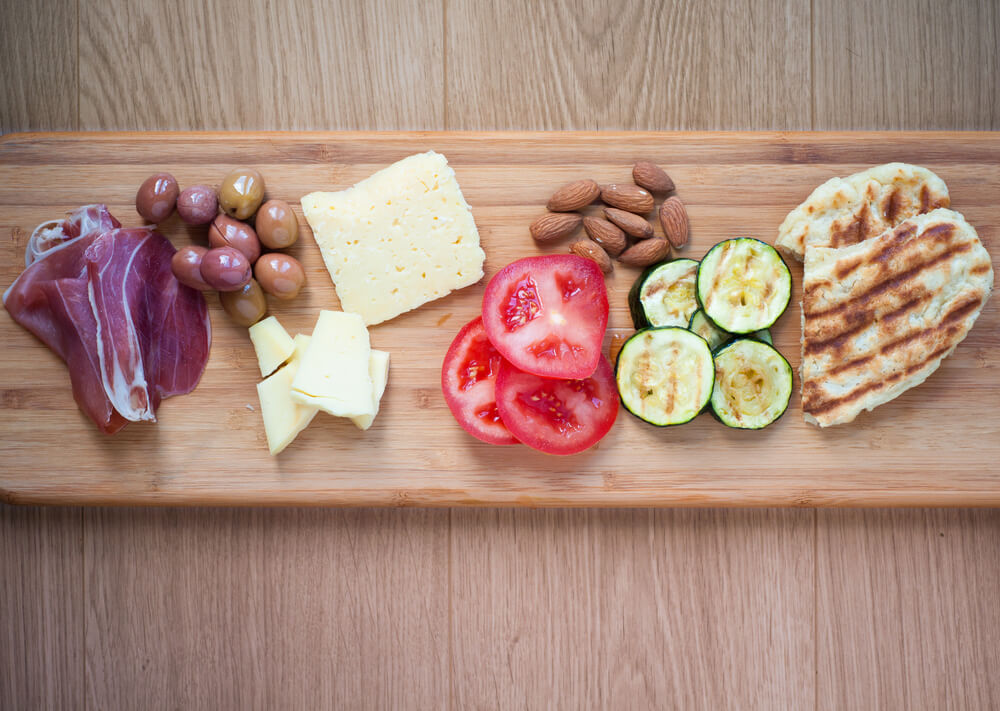
Often times, when people ask how to lose weight or build muscle, they start rolling their eyes as soon as you say “proper meal planning.” But the truth is, this is exactly how you need to reach your goals. That doesn’t mean that you have to stick with the boiled chicken breast and plain brown rice, though. There are tons of ways to get creative and tasty when it comes to your muscle building meal plan.
Not having a proper meal plan can lead you right to disaster. And by disaster, we mean not gaining or losing the weight that you want, or gaining/losing too quickly which is going to end up leaving you with more fat storage and/or more muscle loss. You also have to battle some serious hunger pains and cravings, as well as find yourself getting sick and tired of boring foods, so your motivation is going to drop significantly.
Basically, improper meal planning will have you stuck in a rut and you’re going to just stay there until you eventually decide to throw the towel in.
However, when you have a successful meal plan in place, you’re going to see consistent and even sustainable results. So instead of bouncing from diet to diet, you’ll be making a lifestyle transformation that’s here to stay.
So we wanted to share some helpful tips about meal planning to help you get started.
Calculate Your Daily Calorie Intake
First and foremost, making sure you are calculating your daily calorie intake. Let’s say this is something you decide isn’t important – you don’t need to worry about how many calories you’re taking in during the day. We will tell you this now, you will not lose any weight.
If your focus is on getting rid of fat, what you need to do is fairly simple – give your body less energy (which you get through food) than what it actually burns daily. And of course this energy is measured in unit of calories.
This whole process is called a calorie deficit. When you start doing this, your body is going to reach for that fat that’s been stored up in order to get the energy which it requires.
Over time, as you continue doing this, you will see a decrease in your body fat percentage.
The next question you might have is how big of a deficit you should jump in to. Although a lot of diets focus on some huge decreases (aka barely eating all day every day) this isn’t what you want to do. In fact, this type of deficit can cause some seriously harmful side effects like huge loss in muscle, irritability, metabolic damage and a lot more.
So the key here: Putting yourself in a moderate calorie deficit.
So you want to eat about 20% less calories than what your body burns on a daily basis. If you’re able to do this, you will find yourself losing 1-2 pounds on a weekly basis. But it doesn’t stop there – you will also have some great added benefits, like a better mood, energy levels, metabolic health and even mental balance.
Here’s your first step to figuring out how many calories you need to eat in a day. First, you need to figure out about how much energy you’re burning each day – and this needs to be as accurate as possible.
Sure there are a few different methods to doing this – you can track yourself and then input a bunch of info, including everything from just hanging out on the couch to doing some hardcore training. And yes it does work – but it takes up a lot of time.
You can give this a shot instead. Using the Katch McArdle formula, figure out how much energy your body is burning on a daily basis (not including any physical activity). This number is going to be your BMR, which stands for basal metabolic rate. Then you want to take that number and multiply it by the number you see fit: If you exercise 1-3 hours a week, multiply the BMR by 1.2. If you’re exercising 4-6 hours a week, multiply it by 1.35. And if you’re over 6 hours a week, multiply it by 1.5.
The number you come up with is going to be a pretty accurate idea of how much your body is burning each day.
This is called total daily energy expenditure (TDEE).
If you’re scratching your head and trying to figure out why the multipliers are a lot lower than what the Katch McArdle multipliers are, as well as a few other sources on the Internet, the reasoning is simple – those multipliers are too high, which means you won’t lose weight if you don’t have a crazy fast metabolism.
From here, take your TDEE results and multiply them by .8 in order to get the 20% calorie deficit we’re looking for.
When you eat 80% of your TDEE on a daily basis, you are putting yourself into a moderate calorie deficit, which is just enough to keep you losing weight but also keep yourself healthy.
Here’s what a lot of people aren’t aware of – calories and building muscle are actually connected. In fact, your calorie intake has just as big of impact as building up your muscle as it does with getting rid of fat.
So the calories you eat in a day has a huge effect on whether or not your body is able to build muscle successfully. Why? Because energy balance, a biological factor, is critical to the whole physiological processes that go on in order to create growth in muscles.
This means that if your body has a negative energy balance, you’re supplying it with less energy than what it’s actually burning. So that’s going to cause weight loss. However, what it’s also going to do is hinder your body’s capacity to create the various muscle proteins.
When your body is in any kind of calorie deficit it can’t build muscle as efficiently. This is generally why a majority of people aren’t able to lose weight and build muscle at the same exact time. If you want to spend your time focusing on building muscle, then you have to follow the rules. You cannot be in a calorie deficit. Actually, quite the opposite – in order to build muscle, you need to have an increase in your calorie surplus. Doing this will put you into a positive energy balance.

This whole thing is true, no matter what type of diet or method you follow. If you put yourself into a calorie deficit for many days a week, you aren’t going to build any muscle, unless you are brand spanking new to the whole weightlifting era.
Calorie Surplus for Meal Planning
And as you might have guessed by now, in order to put yourself into a slight calorie surplus, all you need to do is multiply that TDEE amount we got earlier by any number that’s larger than 1.
When you do this, you’ll be putting yourself into the “bulking” phase. Just make sure you keep it fairly even. You don’t build muscle faster when you push your calorie surplus intake higher and higher. You’re just going to get fatter and fatter faster.
Not only does that suck, but it also makes it a lot harder for you to gain muscle. So then you’re going to have to spend a big chunk of your time cutting, which is going to slow down this process even more.
A simple way to make sure this doesn’t happen? Start off with a smaller surplus. Wait and see how your body responds to this and then go from there. If you want more, go for it. If you think you need less, adjust until it feels right.
Now that you’ve got that whole total calorie need thing all worked out, the next step in the meal planning process is taking a look at macronutrient ratios. But let’s take a step back for a second. The reason why we looked at the calories you eat vs the calories your body burns (and why it’s the key ingredient to weight loss/gain) is because an important piece of this is finding out where those calories are coming from.
We’ll start off that talk with defining a macronutrient – or just plain old macro. It’s generally things like protein, fats, carbs and essential minerals like iron, zinc, calcium, phosphorous, and magnesium.
You might know this already but the macros we want to look at in this article are fats, carbs and proteins. This is how it plays out – 1 gram of protein and 1 carb = 4 calories. 1 gram of fat = 9 calories.
That is the equation you need to follow in order to change your calorie target into macro targets.
Like most topics in fitness, there are way too many opinions on macro ratios, and not enough facts. So we’re going to give you the facts.
In order to maintain muscle and maximize growth, while in a calorie surprise, you want a high protein diet. Period.
But carbs don’t make you fat. In fact, they can help you preserve your build and also build up muscles. Despite all the hate that has surrounded them over the last few years, they’re actually your friends. And here’s why:
Firstly, when you weight lift, it seriously cuts down on the glycogen that your body stores up. So when you refill these storages, you are boosting your performance and cutting back on the muscle breakdown that exercise causes.
Secondly, insulin is what brings the nutrients from your blood into your cells, and it gets released from your pancreas when you eat food.
So how does this relate to carbs? Well, eating a decent amount of carbs is going to create a long, sustained release of insulin. And because it cuts down on the rate in which protein is broken down, it’s going to provide an anabolic environment which is going to make muscle grow faster.
As for fats, you should aim to get about 20-35% of your daily calories from various kinds of dietary fat. Your body only requires a certain amount of fat in a day, so you don’t need as much as you think. If you want to increase your fats to over 30%, then you need to cut out some carbs in order to make room.
Let’s say you’re aiming to eat 2,500 calories a day, with 30% of that coming from protein, 50% coming from carbs and the remaining 20% coming from fat. That’s going to look like 190 grams of protein, 310 grams of carbs and 55 grams of fat.
If you wanted to get 30% of your calories from protein, with 40% coming from fat and the rest of the 30% coming from carbs, that would equal out to 190 grams of protein and carbs with 110 grams of fat.
We suggest you take the first route, with more carbs, in order to have more energy to push through your workouts.
Here’s what we recommend – go for 40% protein, 40% carb and 20% fat for a calorie deficit. As for a calorie surplus, go for 1 gram of protein for every body pound, with 20% from fat and the rest carbs.

Eat Food You Like to Eat for You Meal Plan
Our third tip for meal planning – eat foods you like to eat! How much you eat means a lot more than what you eat. So as long as you are sticking with your daily macro targets, your doing is going to respond accordingly. We aren’t saying eat whatever the heck you want. But get your calories from foods full of nutrients, so greens, avocados, bell peppers, mushrooms, potatoes, Brussel sprouts, berries, eggs, peas, almonds, peanuts, salmon, turkey, chicken, tuna, and lean beef.
So like we said in the beginning…so much more than just boiled chicken breasts and brown rice.
As for scheduling, don’t stress yourself out coming up with a set schedule. Rather, find a meal schedule that’s perfect for your own individual schedule. But aim to eat every 3 to 4 hours in order to starve off hunger and keep yourself in check.
But as a general rule of thumb, you can aim to have 30 grams of protein and somewhere between 30-50 grams of carbs before you weightlift. Then have 30-50 grams of protein and 30% of your carbs for the day after the workout.

Conclusion
Our final tip to you – adjust as you see fit! Is your body responding to the new changes you’re putting forth? If not, you have the control to alter it until it does. It might take some time, but if you’re following it correctly, you should be losing 1-2 pounds a week. And for the most accurate way to find out if you’re losing weight, start taking measurements around your waist and other problem areas.
-Terry Asher
Terry
Latest posts by Terry (see all)
- How Important Are Net Carbs For Building Huge Muscle? - Apr 28, 2017
- The Matt Damon Workout Explained - Apr 27, 2017
- Watercress – Benefits And The Best Way To Consume It - Apr 26, 2017










[…] Reduced digestion of adequate-protein, and essential amino acids, can create health issues over time. For this reason, those pursuing careers as pro lifters need to be extra diligent about their daily meal routines. […]
[…] Reduced digestion of adequate-protein, and essential amino acids, can create health issues over time. For this reason, those pursuing careers as pro lifters need to be extra diligent about their daily meal routines. […]